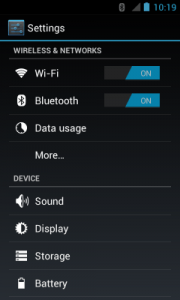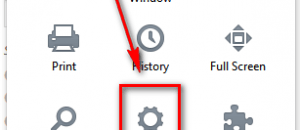 Anyone that has used Ice Cream Sandwich’s new UI in all its glory can attest to how awesomely awesome Google’s new “Holo” theme is. It is obvious Google thinks its new Holo is awesome because they have announced a mandate that all Android devices with Android Market running Android 4.0 or higher must have vanilla Holo on them. (I put emphasis on “with Android Market” because Android, as an open source platform, is not directly controlled by Google. They manage it, yes, but they don’t control it per se like Apple controls iOS and Microsoft controls WP7. Anyone can take Android and make whatever they want out of it without Google’s consent, as shown by Amazon’s Kindle Fire. However, Android may be open source but Android Market is owned by Google. Google can withhold – refuse to license – Android Market to those manufacturers that don’t do as Google says. Hence the emphasis on “with Android Market”.)
Anyone that has used Ice Cream Sandwich’s new UI in all its glory can attest to how awesomely awesome Google’s new “Holo” theme is. It is obvious Google thinks its new Holo is awesome because they have announced a mandate that all Android devices with Android Market running Android 4.0 or higher must have vanilla Holo on them. (I put emphasis on “with Android Market” because Android, as an open source platform, is not directly controlled by Google. They manage it, yes, but they don’t control it per se like Apple controls iOS and Microsoft controls WP7. Anyone can take Android and make whatever they want out of it without Google’s consent, as shown by Amazon’s Kindle Fire. However, Android may be open source but Android Market is owned by Google. Google can withhold – refuse to license – Android Market to those manufacturers that don’t do as Google says. Hence the emphasis on “with Android Market”.)
No More Manufacturer Cr*p?
Don’t shat your pants out of excitement that vanilla Android is coming to your device. This does not mean the days of manufacturer customizations and UIs are over. Google is making the presence of stock Holo mandatory on Android devices. That means all devices must have it installed and available in all its vanilla glory. That does not mean manufacturers must drop their own themes and customizations and use Holo. Manufacturers can still install their own themes and customizations, alongside Holo, and force consumers to use their themes and customizations instead of Holo.
So What Is The Point Of This Mandate?
At this point in time Google is making the presence of stock Holo mandatory to make it easier for app developers to unify the look of their apps. In other words, Google wants it easier for app developers to know how their apps will looks like across all devices. Currently, with so many custom skins out there, it can be hard for app developers to get a unified look for their apps across all devices. With this new requirement by Google app developers can easily pick between using Holo for their apps or using the theme provided by the device manufacturer. In fact Google has even introduced a new API to make this choice easier for app developers.
How Does It Affect Me, The Consumer?
Unfortunately, as already mentioned above, manufacturer customizations are here to stay — for now at least. However, now Android users will have apps that have more unified appearances. More importantly, however, this move by Google makes it easier for manufacturers to update to new versions of Android which hopefully will lead to a quicker release of Android updates by manufacturers.
Where Do We Go From Here?
Google promised better unification with Ice Cream Sandwich to tackle fragmentation and varying Android experiences across devices. Hopefully this is just the beginning of convergence and helping unify the Android experience. The next step needs to be Google forcing manufacturers to give users the ability to switch between manufacturer UIs and stock Android because, you know, choice is a weapon us Androidities like to use in our intellectual debates on why iOS sucks.
Feel free to share your thoughts in the comments below.

 Email article
Email article



